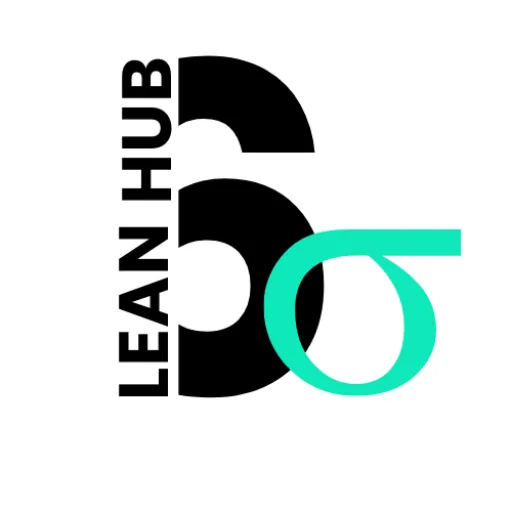Streamlining Processes with Value Stream Mapping
In the ever-evolving landscape of business operations, we find ourselves constantly seeking ways to enhance efficiency and streamline processes. One powerful tool that has emerged in this quest is Value Stream Mapping (VSM). This visual representation of the flow of materials and information through a process allows us to identify areas for improvement and eliminate waste.
By mapping out our processes, we gain a clearer understanding of how value is created and delivered to our customers, enabling us to make informed decisions that drive operational excellence.
Value Stream Mapping is not merely a technique; it is a mindset that encourages us to view our operations holistically.
It compels us to consider every step in our processes, from the initial stages of production to the final delivery of products or services.
By engaging in this practice, we foster a culture of continuous improvement, where every team member is empowered to contribute to the optimization of our workflows. As we delve deeper into the principles and practices of VSM, we will uncover its potential to transform our organizations and enhance our overall performance.
Key Takeaways
- Value Stream Mapping (VSM) is a visual tool used to analyze and improve the flow of materials and information in a process.
- Understanding the current state of processes involves mapping out the entire process from start to finish, including all the steps and activities involved.
- Identifying waste and inefficiencies is a key part of VSM, as it helps to pinpoint areas for improvement and optimization.
- Creating a future state map involves designing an ideal state for the process, with a focus on eliminating waste and improving efficiency.
- Implementing changes and improvements is crucial for realizing the benefits of VSM, and involves making the necessary adjustments to the process based on the future state map.
Understanding the Current State of Processes
Identifying Key Steps
We begin by identifying the key steps involved in delivering value to our customers, mapping out each stage from start to finish. This exercise not only helps us visualize the process but also allows us to engage with team members who are directly involved in these operations.
Analyzing the Current State
As we analyze the current state, we pay close attention to the various inputs and outputs at each stage. We document the time taken for each step, the resources utilized, and any delays or bottlenecks that may exist.
Fostering Collaboration
This thorough examination provides us with a baseline understanding of our operations, highlighting areas where we excel and those that require attention. By involving cross-functional teams in this assessment, we foster collaboration and ensure that diverse perspectives are considered, ultimately leading to a more accurate representation of our current state.
Identifying Waste and Inefficiencies
Once we have mapped out our current state processes, the next critical step is to identify waste and inefficiencies. In Lean methodology, waste is defined as anything that does not add value to the customer. As we scrutinize our value stream map, we look for common types of waste, such as overproduction, waiting times, unnecessary transportation, excess inventory, and defects.
By pinpointing these areas, we can begin to formulate strategies for improvement. In this phase, it is essential for us to adopt a mindset of curiosity and inquiry. We ask ourselves probing questions: What steps can be eliminated?
Where do delays occur? Are there redundancies in our processes? By fostering an environment where team members feel comfortable sharing their observations and insights, we can uncover hidden inefficiencies that may not be immediately apparent.
This collaborative approach not only enhances our understanding of waste but also empowers individuals to take ownership of their roles in driving improvements.
Creating a Future State Map
| Metrics | Current State | Future State |
|---|---|---|
| Lead Time | 10 days | 5 days |
| Process Efficiency | 75% | 90% |
| Customer Satisfaction | 85% | 95% |
| Cost Savings | 100,000 | 150,000 |
With a clear understanding of our current state and the waste present within it, we can now turn our attention to creating a future state map. This vision represents an idealized version of our processes, where waste has been minimized, and value flows seamlessly from one step to the next. In this phase, we engage in brainstorming sessions with our teams to envision what an optimized process would look like.
As we design our future state map, we consider various strategies for improvement. This may involve reconfiguring workflows, implementing new technologies, or redefining roles and responsibilities. We prioritize changes that will have the most significant impact on reducing waste and enhancing efficiency.
By visualizing this future state, we create a shared understanding among team members of what success looks like and establish a roadmap for achieving it.
Implementing Changes and Improvements
Transitioning from our future state map to actual implementation requires careful planning and execution. We recognize that change can be met with resistance; therefore, it is crucial for us to communicate effectively with all stakeholders involved. We outline the benefits of the proposed changes and how they align with our organizational goals.
By fostering a sense of ownership among team members, we encourage them to embrace the changes rather than resist them. During implementation, we take a phased approach, allowing us to test new processes on a smaller scale before rolling them out more broadly. This iterative method enables us to gather feedback and make necessary adjustments along the way.
We also ensure that adequate training and resources are provided to support team members as they adapt to new workflows. By maintaining open lines of communication throughout this process, we create an environment where continuous improvement becomes ingrained in our organizational culture.
Monitoring and Measuring Progress
Assessing Results and Gathering Feedback
By regularly reviewing these indicators, we can assess whether our changes are yielding the desired results. In addition to quantitative measures, we also seek qualitative feedback from team members and customers alike. Engaging in regular check-ins and surveys provides us with valuable insights into how well the new processes are functioning and whether any adjustments are needed.
Staying on Track and Committing to Improvement
This ongoing evaluation not only helps us stay on track but also reinforces our commitment to continuous improvement as a core value within our organization.
Sustaining Improvements
Achieving improvements through Value Stream Mapping is just the beginning; sustaining those gains is equally important. To ensure that the changes we have implemented become ingrained in our daily operations, we must establish mechanisms for ongoing review and refinement. This may involve regular team meetings focused on process evaluation or creating visual management tools that keep performance metrics visible to all team members.
We also recognize the importance of fostering a culture of continuous improvement within our organization. Encouraging team members to share their ideas for further enhancements creates an environment where innovation thrives.
By celebrating successes and learning from setbacks, we reinforce the notion that improvement is an ongoing journey rather than a one-time event.
Benefits of Value Stream Mapping
In conclusion, Value Stream Mapping serves as a powerful catalyst for operational excellence within organizations. Through its structured approach to understanding processes, identifying waste, and implementing improvements, we unlock significant benefits that extend beyond mere efficiency gains. By engaging in this practice, we cultivate a culture of collaboration and continuous improvement that empowers every team member to contribute meaningfully.
The advantages of Value Stream Mapping are manifold: enhanced customer satisfaction through faster delivery times, reduced costs through minimized waste, and improved employee morale as individuals feel valued in their roles. As we continue to embrace VSM as a fundamental aspect of our operations, we position ourselves not only for immediate success but also for long-term sustainability in an increasingly competitive landscape. Ultimately, Value Stream Mapping is not just about mapping processes; it is about creating a shared vision for excellence that drives us forward together as an organization.
FAQs
What is VSM?
VSM stands for Value Stream Mapping. It is a tool used in lean manufacturing and lean management to visualize the current state of a process and identify areas of waste.
What is the purpose of VSM?
The purpose of VSM is to map the end-to-end process of a system and identify value-adding and non-value-adding steps. The goal is to eliminate waste and improve the overall efficiency of the process.
How does VSM work?
VSM works by creating a visual representation of the entire process, including all the steps, materials, and information flow. This allows for a clear understanding of how the process currently operates and where improvements can be made.
What are value-adding and non-value-adding steps in VSM?
Value-adding steps are those that directly contribute to the product or service being produced and are considered essential by the customer. Non-value-adding steps are those that do not add value to the product or service and are considered wasteful.
What are the benefits of using VSM?
Some of the benefits of using VSM include identifying and eliminating waste, improving process efficiency, reducing lead times, and increasing overall productivity. It also helps in creating a common understanding of the process among team members.






